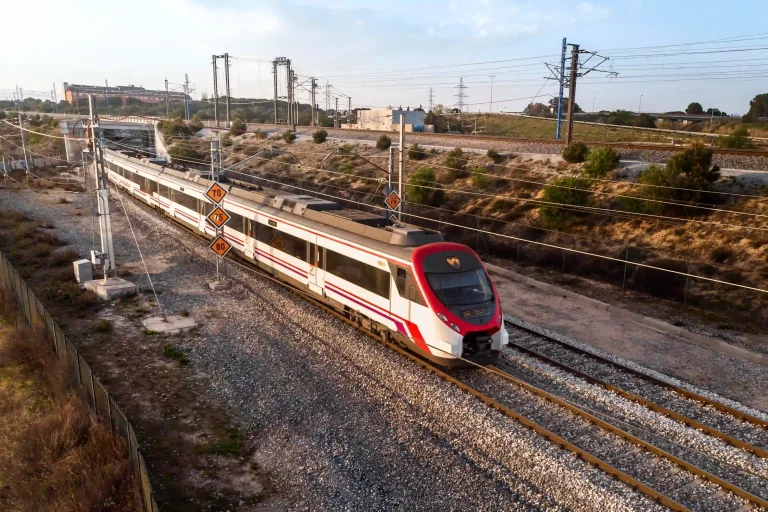Understanding Tension Clamps
Definition and Basic Concepts
A tension clamp is a specialized device employed in electrical systems to secure and manage wires and cables, especially in overhead line installations. Its main role is to maintain the tension and alignment of conductors, ensuring seamless electrical transmission. Designed to withstand substantial mechanical loads, these clamps are crucial in preventing line sagging, maintaining proper spacing, and safeguarding the overall integrity of the electrical network.
Historical Development and Evolution
The history of the tension clamp is deeply rooted in the evolution of electrical infrastructure. Initially, rudimentary clamping devices were utilized, which evolved over time with technological advancements. Modern tension clamps incorporate various materials and designs to enhance their efficiency and durability. The progress in materials science and engineering has led to the development of more resilient and reliable tension clamps, capable of withstanding extreme weather conditions and mechanical stress, thereby enhancing the reliability of electrical systems.
Types of Tension Clamps
Strain Clamps vs. Suspension Clamps
Tension clamps can be broadly categorized into strain clamps and suspension clamps. Strain clamps are used to carry the unbalanced tension loads and are typically found in areas where conductors are subjected to extra mechanical stress, like at the terminal or angle towers. Suspension clamps, on the other hand, are used to support conductors by suspending them without creating any additional tension. This differentiation allows for precise applications based on the requirements of the electrical system, ensuring both performance and safety.
Materials Used in Tension Clamps
The materials used in making tension clamps significantly influence their performance and durability. Common materials include aluminum alloys, stainless steel, and synthetic polymers. Aluminum alloy clamps are lightweight yet robust, widely used due to their excellent conductivity and resistance to corrosion. Stainless steel offers superior strength and durability, suitable for high-stress environments. Synthetic polymers bring flexibility and insulation properties, essential for specific applications requiring non-conductive components.
Variations Based on Application Scenarios
Tension clamps exhibit considerable variation based on their intended uses. For example, those utilized in city settings may emphasize aesthetic integration and compactness, whereas rural applications might prioritize durability and resistance to severe weather conditions. Moreover, tension clamps crafted for high-voltage lines differ in both design and material from those employed in low-voltage scenarios, underscoring the critical need to select the appropriate type according to specific requirements.
Key Components of Tension Clamps
Main Body Structure
The main body structure of a tension clamp is typically crafted from high-strength materials like aluminum or steel to bear mechanical loads effectively. This main body must be both robust and lightweight to facilitate easy installation and longevity in service. The design also includes features that distribute the load evenly, preventing damage to the conductor and ensuring long-term reliability.
Insulating Elements
For applications where electrical insulation is crucial, tension clamps are equipped with insulating elements made from high-quality polymers or rubber. These insulators prevent electrical discharge and arc-over, which is critical for maintaining the safety and efficiency of the electrical system. The insulating elements must be durable to withstand environmental stresses such as UV light, moisture, and temperature fluctuations.
Connectors and Bolts
Connectors and bolts are essential components of any tension clamp, ensuring secure attachment to the conductor and supporting structures. These elements are often made from corrosion-resistant materials such as galvanized steel or brass, ensuring longevity and reliability. Precision engineering of these parts is vital for maintaining the tension and proper alignment of conductors.
Functions and Applications in Electrical Systems
Role in Overhead Line Installations
In overhead line installations, the tension clamp is essential for preserving the mechanical and electrical integrity of the system. By firmly securing the conductors, it guarantees that the lines stay taut and properly aligned, which is vital for operational efficiency and safety. These clamps are especially critical in regions exposed to strong winds or where extensive spans between supports are required.
Importance in Maintaining Line Tension
Maintaining line tension is paramount in preventing sagging and ensuring the reliability of electrical systems. A well-functioning tension clamp helps maintain the necessary tension, thus enhancing the overall stability of the power lines. Proper tension mitigates risks such as conductor damage, misalignment, and potential safety hazards, contributing to a more reliable electric grid.
Impact on Electrical Conductivity
Maintaining proper tension is essential for optimal electrical conductivity. Tension clamps ensure that conductors remain in tight contact, minimizing electrical resistance and energy losses. By keeping conductors properly aligned and connected, these clamps play a crucial role in sustaining high efficiency in power transmission.
Prevention of Cable Slippage
One of the critical functions of a tension clamp is to prevent cable slippage. When cables are properly clamped, they are less likely to move or slip, which helps to avoid disruptions in the electrical flow. This feature is especially important in regions prone to high wind or seismic activity, where maintaining the physical stability of power lines is challenging.
Use in High Voltage Lines
In high voltage lines, the function of a tension clamp is of utmost importance. These clamps must manage higher mechanical loads while also providing excellent electrical insulation to avoid arcing and discharges. For high voltage applications, it is essential that clamps are made with advanced materials and engineered to adhere to rigorous safety and performance criteria.
SAFE Rail Fastening System (Zhejiang) Co., Ltd.
Like a shining star in the night sky, SFFST has emerged as a beacon of progress in the field of railway maintenance, guiding the way forward with its commitment to safety, speed, efficiency, stability, and technology.
But what makes SFFST truly remarkable is its adaptability and versatility. Just as a tension clamp is an essential component in electrical systems, SFFST plays a critical role in ensuring the smooth functioning of railway operations. It provides a comprehensive and standardized process for rail gauge baffle maintenance, allowing railway companies to maintain the highest levels of safety and efficiency while minimizing downtime and maximizing productivity.
At SAFE Rail Fastening System (Zhejiang) Co., Ltd., they are committed to promoting the SFFST approach and helping railway companies achieve their goals of safety, speed, efficiency, stability, and technology. Just as a tension clamp is indispensable in electrical systems, SFFST is the key to unlocking the full potential of railway operations. Let us work together to embrace this remarkable innovation and take the railway industry to new heights of success.
Installation and Maintenance Practices
Installation Procedures for Optimal Performance
Recommended Tools and Techniques
Correctly installing a tension clamp requires the appropriate tools and techniques to guarantee longevity and optimal performance. The basic tools typically needed include tensioning equipment, torque wrenches, and safety gear. Precision in application is crucial; therefore, it’s vital to follow manufacturer guidelines meticulously. Proper technique not only enhances the clamp’s functionality but also ensures the safety and stability of the entire installation.
Safety Considerations
Safety is an integral aspect of installing a tension clamp. Operators must adhere to strict safety protocols to avoid accidents and ensure the integrity of the electrical system. This includes wearing appropriate personal protective equipment (PPE) such as insulated gloves, safety helmets, and goggles. Additionally, verifying that all components are free from damage and defects before installation can prevent future failures and potential hazards.
Regular Inspection and Maintenance Routines
For a tension clamp to function effectively over time, regular inspection and maintenance routines are crucial. These routines include visual inspections for signs of wear, corrosion, or damage. Regular tightening of bolts and checks for slippage or misalignment are also important. Preventive maintenance schedules ensure that any minor issues are addressed before they escalate, thus maintaining the reliability and efficiency of the electrical network.
Advantages of Using Tension Clamps
Enhanced Mechanical Stability
The use of a tension clamp significantly enhances the mechanical stability of electrical systems. By securely holding conductors in place, these clamps prevent excessive movement and sagging, which can compromise system integrity. This stability is especially vital in environments subjected to harsh weather conditions or high mechanical stress, ensuring the longevity and performance of installations.
Improved Electrical Efficiency
A tension clamp that is correctly installed enhances electrical efficiency by ensuring tight and secure connections between conductors. This action decreases electrical resistance and minimizes energy losses, which in turn facilitates more efficient power transmission. By guaranteeing optimal conductor alignment and appropriate tension, electrical disruptions are minimized, thereby improving the overall performance of the grid.
Cost Effectiveness over Time
Investing in high-quality tension clamps proves to be cost-effective over time. Their durability and reliability reduce the need for frequent replacements or repairs, thereby lowering maintenance costs. The initial investment in superior materials and design pays off in the long run through reduced downtime and extended service life of the electrical infrastructure.
Technological Advances and Future Trends
Innovations in Design and Materials
The field of tension clamp design and materials has seen significant advancements. Modern clamps now incorporate advanced materials like composite alloys and high-strength polymers, which offer enhanced durability and flexibility. Innovations in design focus on improving ease of installation, load distribution, and environmental resistance. These developments contribute to creating more resilient and efficient electrical systems.
Integration with Smart Grid Technologies
As the electrical grid evolves, integrating tension clamps with smart grid technologies represents an exciting future trend. Smart grids require high reliability and precise monitoring, where tension clamps can play a crucial role. Future designs may include sensors and monitoring systems embedded within the clamps to provide real-time data on tension levels and electrical performance, aiding in predictive maintenance and network management.
In summary, grasping the significance and function of a tension clamp in electrical systems is vital for sustaining both mechanical stability and electrical efficiency. By ensuring proper installation, conducting regular maintenance, and adopting technological advancements, tension clamps will remain essential elements in guaranteeing the dependability and performance of our electrical infrastructure.











